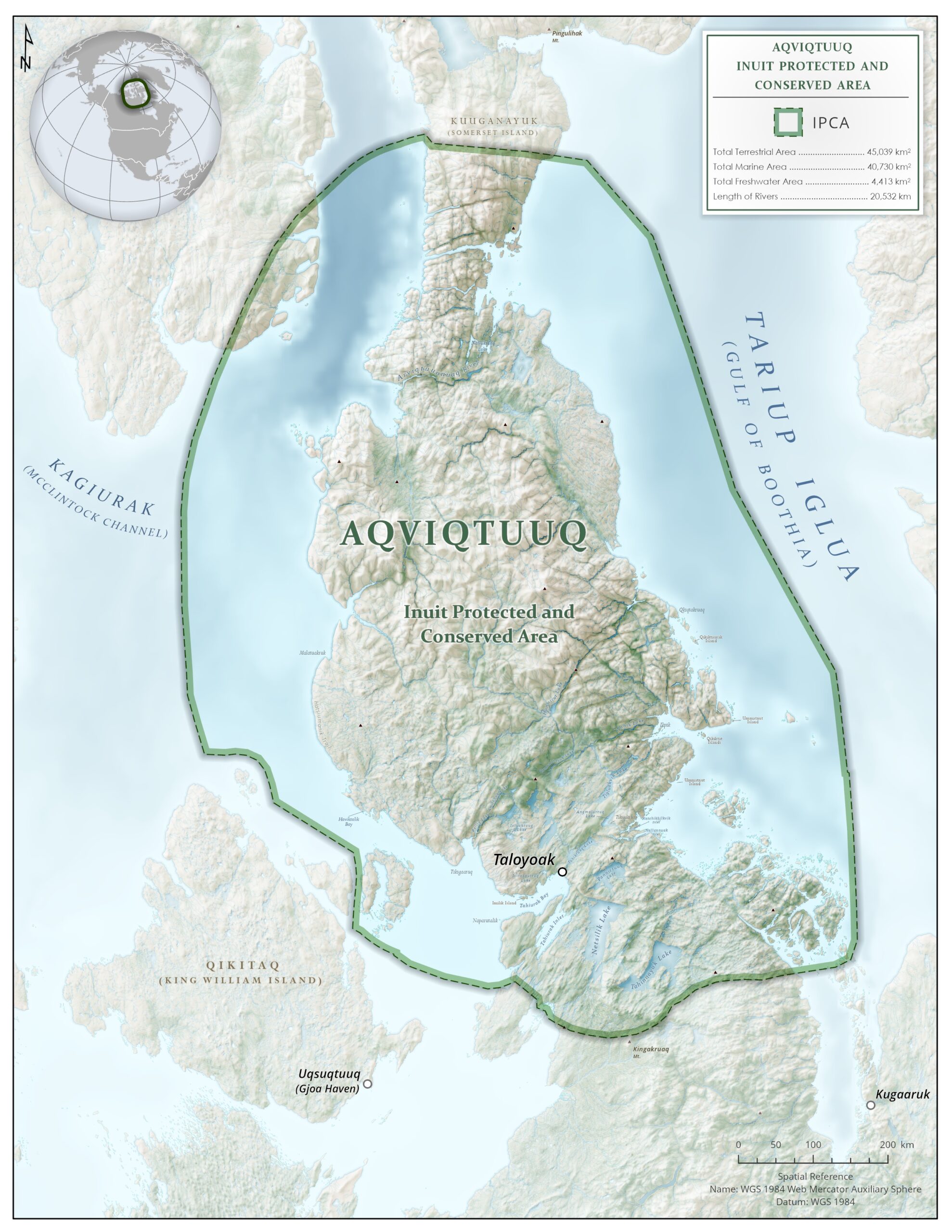Painting the economy ‘blue’: How Nunavut can balance extraction with conservation
Nunavut is home to the fastest growing economy in Canada, with resource extraction accounting for almost 40 per cent of territorial GDP. The territory also boasts sustainable economic opportunities, rooted in traditional Inuit knowledge and skills, that can bolster local economies, strengthen communities and improve food security. They are also closely tied to healthy ecosystems and wildlife populations.
Now, two new reports that we contracted from the Smart Prosperity Institute (SPI) make the case for a different type of economic activity in Nunavut: a blue conservation economy, which generates wealth for a region by meeting the needs of the local community while conserving and restoring (rather than removing) natural resources. This can include activities such as hunting, trapping, fishing, Guardians programs and nature-related tourism. These activities generate local economic growth via sustainable uses of healthy Arctic ecosystems instead of trading off between the two.

Inuit-led Economic Development: An Overview of Nunavut’s Blue Conservation Economy and Conservation Economies in Nunavut: Aqviqtuuq Case Study show that the territory’s growing blue conservation economy is creating stable income for Inuit communities that are successfully leveraging it. There are also numerous co-benefits, including the transfer of Inuit knowledge, culture and language.
“These reports highlight the potential benefits that can come from realizing the conservation priorities of Nunavut communities,” says Paul Okalik, lead Arctic specialist at WWF-Canada. “This approach creates job opportunities that are sustainable for the future, while allowing Inuit to continue their traditional ways of sharing food with their families and communities. We look forward to advancing partnerships with community leaders to renew and strengthen Nunavut’s conservation economy, delivering economic development that reflects Inuit values.”

To show how this happens, SPI looked at three coastal protected areas where investments in local blue conservation economies have contributed toward community development: the in-progress Aqviqtuuq Inuit Protected and Conserved Area as well as the co-managed Tallurutiup Imanga National Marine Conservation Area and Anguniaqvia Niqiqyuam Marine Protected Area.
The Canadian government has also recognized the value of conservation economies. Since 2018, the feds have committed $1.35 billion to advancing Indigenous-led conservation initiatives across the country, signaling to Inuit communities in Nunavut (and other Indigenous Peoples across the country) that they have an unprecedented opportunity to use their traditional knowledge, values and skills to drive prosperity while balancing resource extraction with nature conservation. For example, benefits from investments in the Aqviqtuuq Guardians program are estimated to have generated $12 million since 2016.
“We want to see the lands and resources here protected from industrial development because the area is sacred to us, and has everything we need to prosper,” says Jimmy Ullikatalik, manager at Taloyoak Umarulirijigut Association, the local organization working towards establishing the Aqviqtuuq IPCA. “These reports provide us with a tool to continue advocating for a conservation economy that allows our community to thrive.”
The reports identified how other coastal Inuit communities can also work toward conservation economies of their own, for example by strengthening local-food harvesting or by promoting local artisans. They also showed how investing in Nunavut’s blue conservation economy can help provide jobs, housing and food security to the community while also prioritizing Inuit values, language and culture in a model that serves as a roadmap to success for the world.

